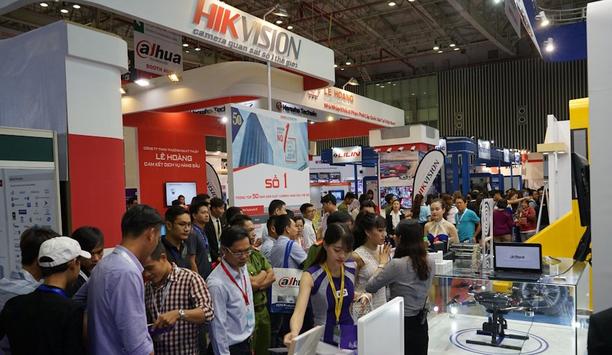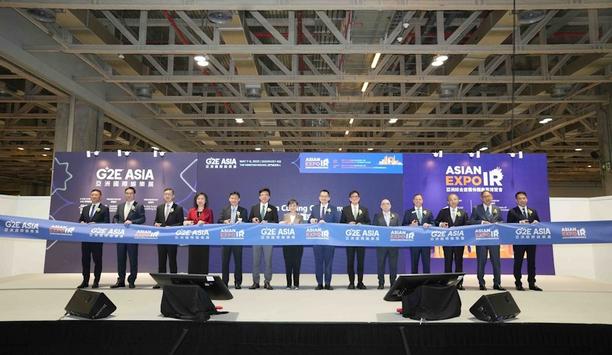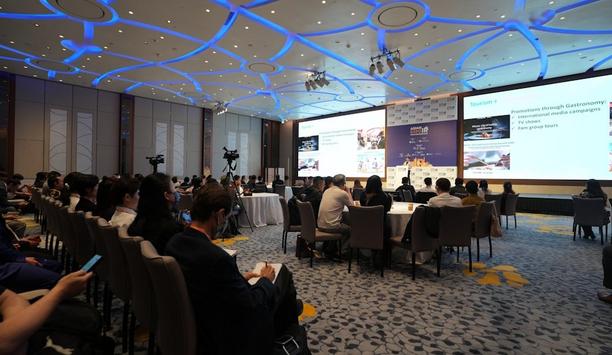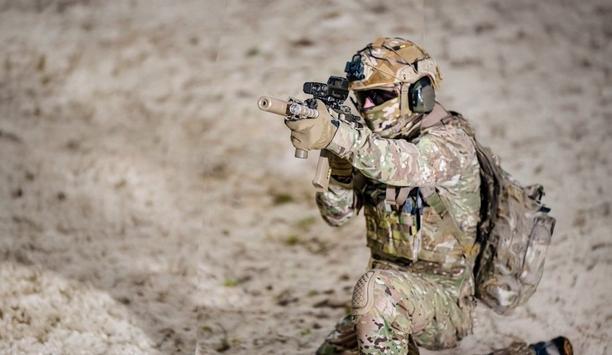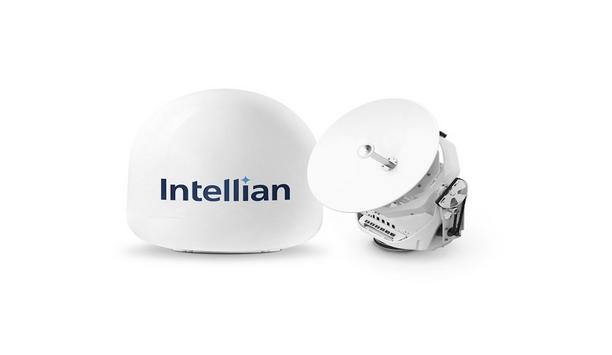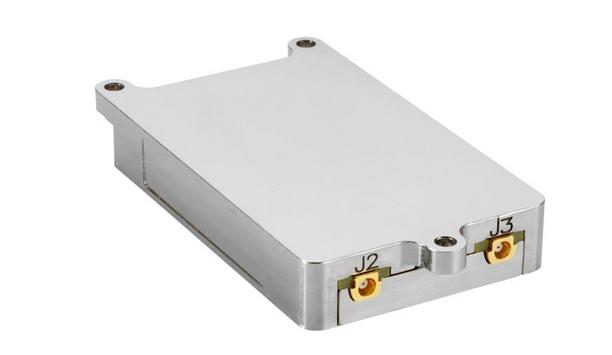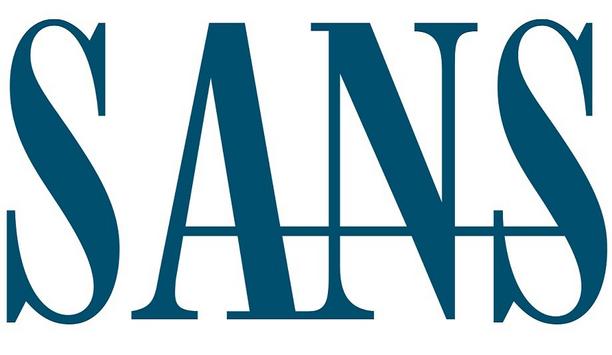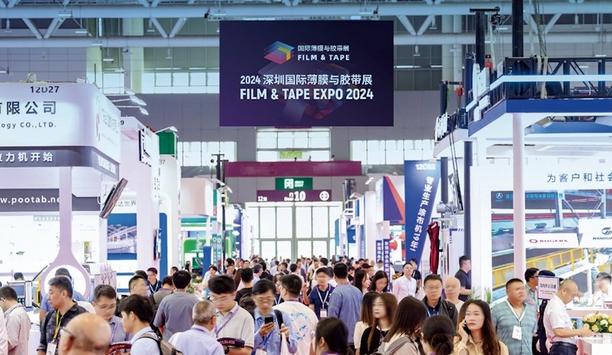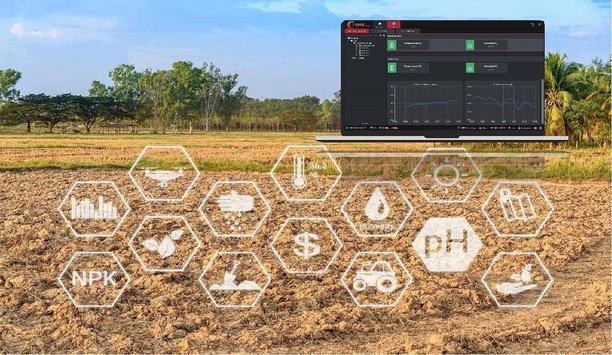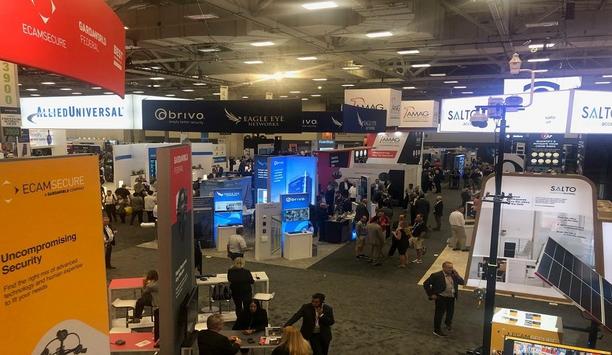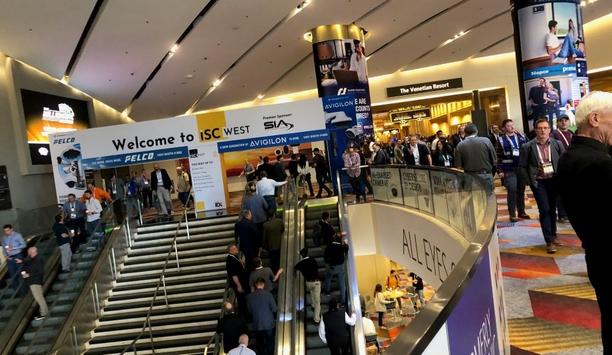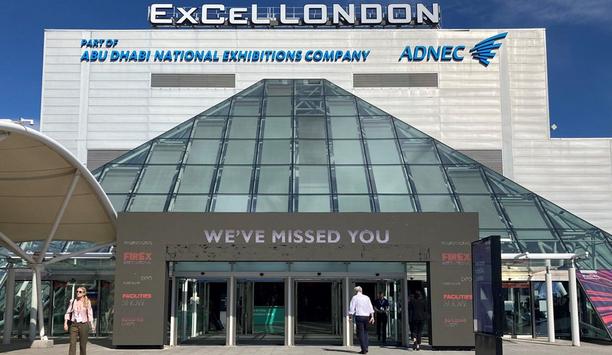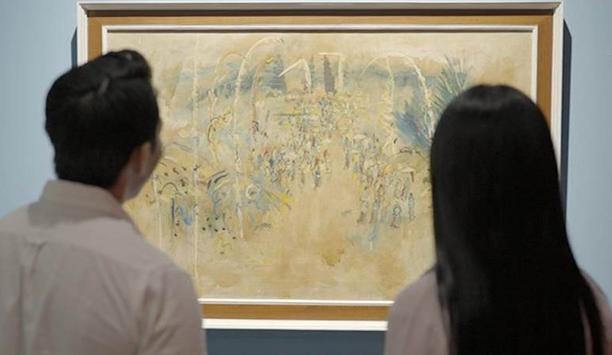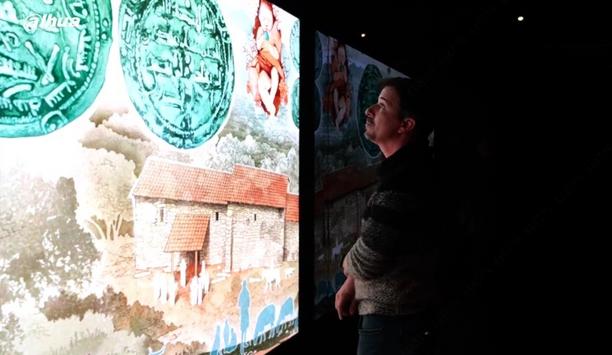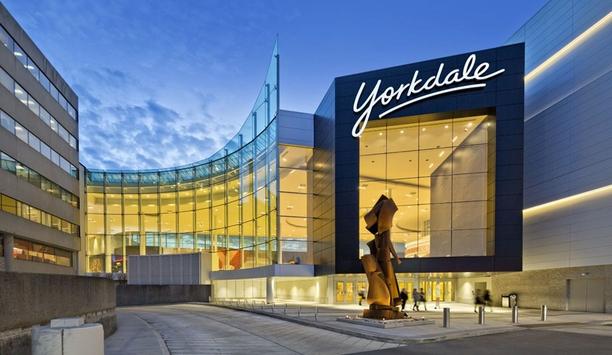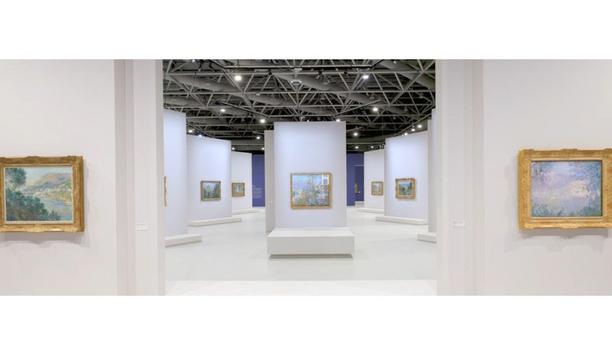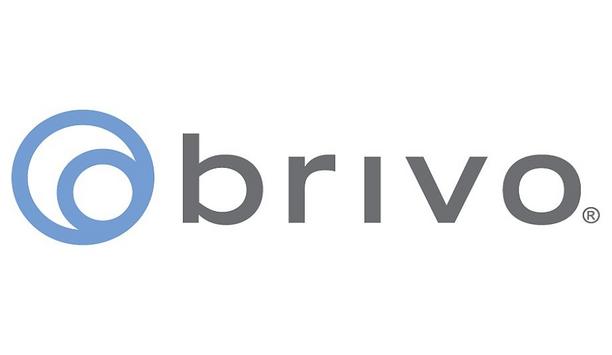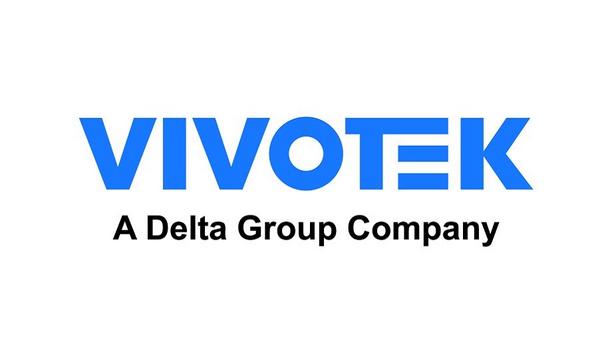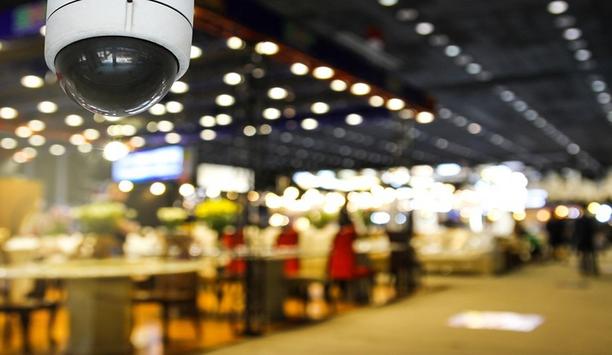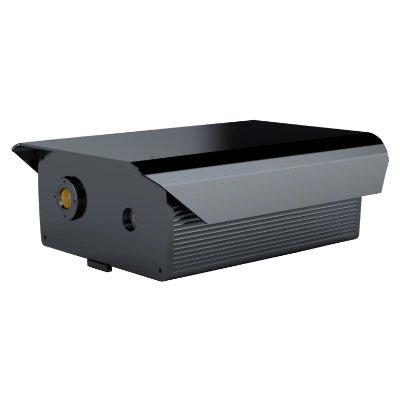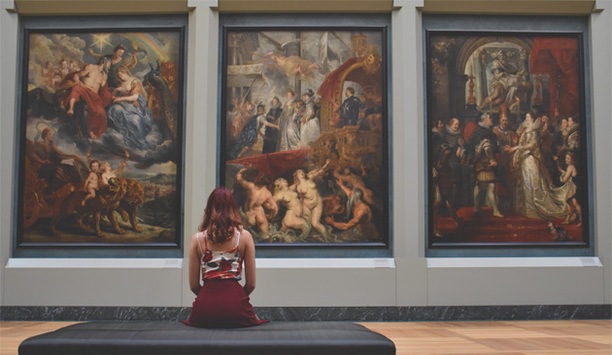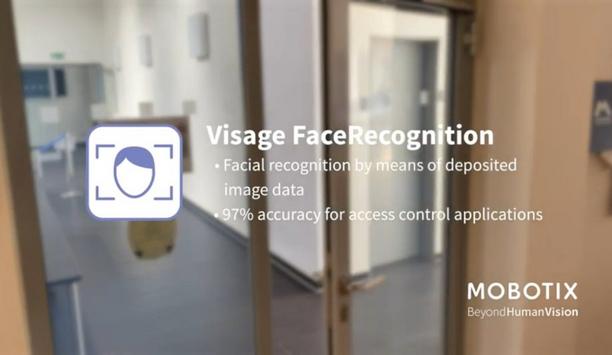Museum surveillance
Against the backdrop of Vietnam’s expanding security, fire safety, and smart building sectors, Secutech Vietnam will return to the Saigon Exhibition and Convention Center (SECC) in Ho Chi Minh City from 14 – 16 August 2025. The 18th edition will span 13,000 sqm, hosting 480 exhibiting brands, presenting the latest solutions driving safer cities and smarter infrastructure. Held with concurrent events Fire & Safety Vietnam and SMABuilding, Secutech Vietnam will spotlight technolo...
Innodisk, a pioneering provider of industrial AI solutions, reaffirmed its pioneering position by showcasing its latest innovations at COMPUTEX 2025 in Taipei. This year, Innodisk’s live demonstrations spotlighted its optimized AI systems—including the APEX series—and computing solutions built on NVIDIA, Intel, and Qualcomm Technologies solutions. Innodisk’s comprehensive portfolio These were seamlessly integrated with Innodisk’s comprehensive portfolio of e...
Secutech 2025 is set to showcase a comprehensive array of cutting-edge solutions from 7 – 9 May at the Taipei Nangang Exhibition Center. This one-stop platform for smart technology and business will cover 15,120 sqm and feature approximately 400 exhibitors from eight countries and regions. Sourcing and business connections Edition is expected to attract visitors, including system integrators, manufacturers, and distributors With a fringe program of over 140 seminars and 14 tr...
G2E Asia and Asian IR Expo, the pioneering marketplace for the gaming, entertainment and integrated resorts sectors, officially opens today at The Venetian Macao, with more than 10,000 industry professionals from 80 countries and regions expected to attend. Running from May 7-9, the exhibition spans over 30,000 sqm, showcasing over 150 exhibitors and featuring cutting-edge products and technologies that encompass the full spectrum of the entertainment and travel industries. Opening ceremony of...
Asian IR Summit officially kicks off, May 6, at the Galaxy International Convention Center in Macau, bringing together top executives from both local and international travel and integrated resort sectors. Over the next three days, industry pioneers will engage in high-level discussions, addressing the challenges shaping the future of the industry. The Asian IR Expo exhibition, co-located with G2E Asia, opens at May 7-9, at The Venetian Macao, with complimentary shuttle service to ensure s...
SMARTSHOOTER, a world pioneer in fire control systems, will showcase its handheld and remotely controlled SMASH solutions at the DEFEA 2025 defense exhibition in Athens, Greece. The company will present its combat-proven SMASH 3000 Fire Control System and the SMASH Hopper Light Remotely Controlled Weapon Station (LRCWS), demonstrating advanced capabilities for counter-UAS (CUAS), maritime security, border defense, and perimeter protection. SMARTSHOOTER’s SMASH technology Combat-proven...
News
Hyundai Global Services has announced the signing of a contract to deliver its Smart Ship and Satellite Communications package to KSS Line shipping fleet supported by Inmarsat’s Fleet Xpress and digital solution Fleet Connect. This is the first time that the Integrated Smart Ship solution from the world’s largest shipbuilder Hyundai Heavy Industries will be delivered as a single package with a satellite communications service. Smart Ship and Satellite Communications The Smart Ship and Satellite Communications package is a combination of the ISS – an IoT platform for ships, developed by HHI Group to support vessel operation and device optimization – supported by Inmarsat’s dedicated bandwidth service. This achievement is a direct result of a collaboration between HGS, Intellian and Inmarsat, the world leader in global, mobile satellite communications. Intellian and HGS signed a Memorandum of Understanding (MoU) in July 2019, and a similar arrangement between HGS and Inmarsat was signed in June 2019 at the Nor-Shipping exhibition in Oslo. The package will allow large volumes of measured data to be transmitted between ship and shore quickly and easily, facilitating remote operations and vessel management, monitoring and analysis services, through Fleet Connect dedicated bandwidth. This is separate from the vessel’s Fleet Xpress connection that will be used for day-to-day business traffic and crew internet use. Digital Fleet Transformation “Our plan is for our entire fleet to be operating using the Integrated Smart Ship and Satellite Communications solutions by 2021,” said a spokesman for KSS Line. “KSS Line is committed to continuous enhancement of its Information Communication Technology (ICT) environment to maximize fleet efficiency and reinvest the resulting savings into its business expansion.” A total of 15 ships are covered by the contract, including five new vessels and 10 already in operation. The five new ships will be equipped with ISS from build, allowing their operators to manage assets more economically and efficiently. The 10 existing vessels will be provided with separate supporting web services to relay weather conditions and ship locations. The signing ceremony was attended by senior executives from both HGS and KSS, including KSS Line’s President Lee Dae-sung, Executive Director Lee Seung-woo and Executive Director Park Wook-jae; and Hyundai Global Services’ boarder members Lee Seung-woo and Executive Director Park Wook-jae; and Hyundai Global Services’ border members. Maritime Digital Milestone “This is a breakthrough for our Integrated Smart Ship and Satellite Communications solution and a milestone for maritime digitalization, delivering always-on IoT in a single package with dedicated bandwidth that can be installed on existing ships or embedded at newbuild,” said Kyoungsoo Ahn, HGS Director. Intellian CEO Eric Sung said: “Smart shipping is an area of growth and importance for the maritime industry, with the opportunity for customers to gain efficiencies and cost savings on vessel operations. Through collaborating with our partners and delivering industry pioneering connectivity solution” “Intellian has a key role to play in helping customers achieve their objectives. Our partnership with HGS and Inmarsat will deliver great value to KSS Line and we are confident that more of the maritime industry will follow their lead, signing similar agreements in the future." Integrated Connectivity Solution “We are delighted to be working with Hyundai Global Services and Intellian on this new Integrated Smart Ship solution with a line-fit satellite communications service at its heart, which means that an owner such as KSS can benefit from a service that is built-in by the shipyard and fully operational on delivery,” said Inmarsat Maritime President Ronald Spithout. “It is especially pleasing to see that our new digital solution, Fleet Connect will be a vital part of the service which highlights how Fleet Xpress is so much more than just a VSAT connectivity pipe.”
Commtact, a provider of advanced wireless communication solutions for defense, security forces, and robotic platforms, will showcase its latest innovation, the Micro Phoenix, at the DEFEA 2025 exhibition in Athens, Greece. As part of the company's portfolio of mission-critical communication systems, the Micro Phoenix delivers secure, resilient, and high-performance connectivity for land, air, and maritime platforms, in a compact, lighter-than-ever design. Commtact is also proud to announce its first contract for the Micro Phoenix, securing a deal with a defense customer to integrate the system into missiles and unmanned platforms. Data link solution Micro Phoenix is a compact, lightweight data link solution designed for drones, missiles, and unmanned systems The Micro Phoenix is a compact, lightweight data link solution designed for drones, missiles, and unmanned systems. Engineered with SWaP (Size, Weight, and Power) constraints in mind, it weighs only 110 grams and offers advanced full-duplex wideband digital links with robust anti-jamming and GPS-deprived operational capabilities. The system supports multiple topologies, including Point-to-Point (P2P), Point-to-Multipoint (P2MP), Relay, and Multi-Platform Smart MESH, ensuring long-range connectivity of up to 150 km in complex operational environments. Introduction of the Micro Phoenix “The introduction of the Micro Phoenix marks a significant step in Commtact’s continuous innovation in secure and resilient communication solutions,” said Guy Avrahami, VP Sales & Marketing at Commtact. “This system is tailored to meet the growing demand for lightweight, high-performance communication solutions for unmanned and missile platforms." "It demonstrates our commitment to delivering value for customers in the field of munitions—where information must be transferred in real-time. We are proud to announce our first contract for the Micro Phoenix, demonstrating the immediate value it brings to our customers.” Phoenix command and control infrastructure Phoenix system, the Micro Phoenix seamlessly blends with the existing Phoenix power infrastructure Building on the success of its predecessor, the Phoenix system, the Micro Phoenix seamlessly integrates with existing Phoenix command and control infrastructure. This enables current users of the Phoenix system to expand their capabilities without requiring additional control systems, enhancing operational flexibility and cost-effectiveness. Range of advanced wireless communication solutions The Micro Phoenix is also equipped with AES-256 encryption and optional CAT & TSV security layers, providing high-level data protection. Its Software Defined Radio (SDR) architecture allows for configuration and adaptation based on customer-specific requirements, making it an ideal solution for defense and security forces worldwide. At DEFEA 2025, visitors to Commtact’s booth will have the opportunity to explore the Micro Phoenix and the company’s full range of advanced wireless communication solutions which are ideal for aerial, ground, and naval operations.
Intersec Shanghai, the Chinese extension of the globally recognized security brand Intersec, will launch 13–15 May 2025 at the National Exhibition and Convention Center (Shanghai). Gathering a variety of exhibitors, the fair will spotlight digital technologies and innovative solutions across key sectors, including security, fire safety, emergency response, and occupational protection. Digital advancements With a special focus on cutting-edge digital advancements, the show aims to empower public safety, emergency management, industrial safety, and disaster prevention. The global security landscape has become increasingly complex in recent years, driving governments worldwide to prioritize the safety and security sector. Smart security hardware and software market China has taken significant steps by implementing a series of policies to accelerate industry growth China has taken significant steps by implementing a series of policies to accelerate industry growth. By 2025, the smart security hardware and software market in China is projected to reach RMB 91.3 billion (USD 12.5 billion), while the market for occupational protection products is expected to reach RMB 145 billion (USD 19.9 billion). Furthermore, the smart fire safety market is anticipated to surge to RMB 422.2 billion (USD 57.8 billion) by 2026. A joint report by SIA, ASIS, and Omdia predicts a CAGR of 8.2% for the global physical security equipment market and 6.9% for security services from 2022 to 2026. Against this backdrop of robust domestic growth, Intersec Shanghai emerges as a pivotal platform for companies to showcase their innovations and expand their market reach. Global and domestic industry pioneers under one roof Intersec Shanghai combines Messe Frankfurt’s international expertise with Intersec’s extensive resources in the security sector. The show will be held concurrently with the Yangtze Delta International Emergency Disaster Reduction & Rescue Expo (EDRR), which focuses on government-led emergency systems and disaster resilience. Latest advancements in security The previous edition’s EDRR attracted more than 600 exhibitors and over 80,000 visitors, together drawing a higher number of buyers The previous edition’s EDRR attracted more than 600 exhibitors and over 80,000 visitors, together drawing a higher number of buyers and offering a valuable opportunity for cross-sector sourcing in security, safety, and disaster risk reduction. This year, both fairs have attracted leading brands such as 3M, HAINAR GROUP, CETC, CPIC, StarWin, Fire Chem, BFDX, GRANDING, LINGYIN, HANGZHOU AITE, DXGuard, Inrico, Lenovo, BAOLIFENG, OUBAO, PICC, Raythink, Beckwell, SHANGHAI HANYU, Shanghai Hygloves, Shanghai Petrochemical, Shanghai Xihongqiao Navigation Industry Development, Kingber Safety, CommPro, Tianlong Century, CRUN LTD, Sinomartin, Sunstorm, Jiaogao Fire Protection, TAIYU, Zhoan, TLX, top safe, Tyco, VdS, WALLEAN, huangdongmei trading, LONGJUN FIRE EQUIPMENT, YUNHE Technology, FERRASUN, Wanlian, Zhejiang Xun'an Flood Control, e-sunhigh and more. These exhibitors will present their latest advancements in security, fire safety, and emergency response, fostering cross-industry collaboration and growth. Adaptable training systems and real-world scenario simulation Among them, YUNHE Technology will showcase its VR Firefighting Training Solution and Military Deployment Command Training System, emphasizing adaptable training systems and real-world scenario simulation. These solutions are designed for emergency management, public safety education, professional training for firefighting and security units, and industrial safety training. YUNHE Technology highlights the industry’s shift from ‘passive protection’ to ‘operational empowerment’, where security converges with human behavior data, smart feedback, and education. Range of high-efficiency solutions The platform aims to facilitate digital transformation for enterprises, allowing them to operations TLX is a fire safety pioneer in integrated solution design and manufacturing. At the fair, the company will showcase its Supervised Latching Solenoid Actuators, along with a range of high-efficiency solutions tailored for complex fire suppression needs. Meanwhile, Tyco, a security pioneer, will introduce its one-stop security management platform, enabling seamless compatibility with third-party systems for fire control, building automation, human resources, and more. The platform aims to facilitate digital transformation for enterprises, allowing them to streamline their operations. Digital frameworks connecting security innovations Beyond the showcase, the Intersec Shanghai Digitalization Application of Security Industry Value Chain Summit will bring together government officials and industry pioneers to explore digital solutions in security, emergency response, fire safety, and occupational protection. The summit will provide a comprehensive business platform for all industry stakeholders. Key highlights include: Trend analysis: experts will analyze policy trends and technological advancements, featuring case studies on digital applications in energy mining, smart buildings, and environmental safety monitoring. Report launch: the 2025 Digital Transformation Survey for the Safety & Security Industry will be released, providing essential standards and practical guidelines for the sector. Real world applications: focused on ‘full-scenario integration’, sessions will delve into digital applications for safety supervision, operational maintenance, and early-warning systems across critical sectors. Awards ceremony: the a&s Top Digital Products & Solutions Awards will recognize outstanding innovations, serving as a trusted reference for integrators and end-users in their procurement decisions. Intersec Shanghai is organized by Messe Frankfurt (HK) Ltd and CCPIT Shanghai.
Building on 15 years of success, G2E Asia + Asian IR Expo is set to make its highly anticipated return to Macau from May 7-9, 2025, at The Venetian Macao. The 2025 show will introduce a range of new initiatives, including 100 exclusive product launches debuting in Asia for the first time. These will be showcased across more than 30,000 sqm and will cover the full spectrum of the entertainment and travel industries. Networking sessions The event will feature a series of high-impact networking sessions and a firm's matchmaking team The pioneering event in Asia is expected to attract over 10,000 visitors from 80 countries and regions. To maximize opportunities for attendees, the event will feature a series of high-impact networking sessions, along with a dedicated business matchmaking team coordinating over 400 pre-arranged meetings to streamline connections. New gaming innovation forum led by the G2E Asia award This year’s show will also introduce the new Gaming Innovation Forum, featuring three full days of sessions that will dive into the latest gaming trends and technologies, all presented by G2E Asia Awards winners and nominees. Located in the exhibition hall, the forum will be accessible to all event attendees. The G2E Asia Awards celebrates excellence and innovation within the gaming and entertainment industry. The awards will spotlight five prestigious categories, each evaluated by a panel of renowned industry pioneers: Best Slot Award, Best Electronic Table Game Award, Best Table Game Award, Best Casino Supply Award, and Best IR Tech Solution Award. All award-winning products will be prominently displayed in the exhibition, giving attendees the opportunity to experience them firsthand. New smart hospitality technology experience zone The expanded Asian IR Expo will feature a new Smart Hospitality Technology Experience Zone The expanded Asian IR Expo will feature a new Smart Hospitality Technology Experience Zone, offering an immersive and interactive onsite experience. This space will showcase emerging innovations across three unique areas: Smart Reception, Smart Cleaning and Smart Hospitality, each providing guided tours and live demonstrations. Technology zone and tech talk return to the spotlight The popular Technology Zone and Tech Talk will return, showcasing the latest advancements from emerging industry brands. Over two days, Tech Talk will feature expert-led sessions on key topics including entertainment technology and smart hospitality.
Infosecurity Europe, the most influential information security event, which runs from 3-5 June 2025, has announced the launch of ‘Infosecurity Europe Masterclasses, powered by SANS Institute,’ an exclusive new training initiative designed to equip cybersecurity professionals with hands-on, practical skills. Developed for Infosecurity Europe 2025, the Masterclasses will offer three deep-dive sessions covering Digital Forensics, Cloud Security, and Security Culture. Digital Forensics and Cloud Security Digital Forensics and Cloud Security Masterclasses will be held on 3rd June, with the Security Masterclass Each masterclass will be delivered by a SANS-certified instructor and will take place in the South Gallery Rooms at ExCeL London during the event. The Digital Forensics and Cloud Security Masterclasses will be held on Tuesday, 3rd June, with the Security Culture Masterclass on Wednesday, 4th June. Partnership with SANS Institute Introducing these masterclasses highlights the growing demand for specialized training as organizations contend with an increasingly complex threat landscape. Infosecurity Europe has long been a hub for industry pioneers to share knowledge, explore innovative solutions, and foster collaboration. The partnership with SANS Institute builds on this and enhances the event's educational offering. Cybersecurity professionals with the practical skills "Partnering with Infosecurity Europe and bringing hands-on masterclasses to this year’s event is a pivotal moment to elevate security readiness across the UK and Europe. This collaboration will support cybersecurity professionals with the practical skills they need to stay ahead of emerging threats." "Continuous learning is essential in an industry that evolves at such a rapid pace, and by providing hands-on, immersive experiences, we are ensuring that security practitioners can apply cutting-edge techniques in real-world scenarios to make an immediate impact within their organizations," said John Davis, UK Director, SANS Institute. Infosecurity Europe’s 2025 Cybersecurity Trends Report Digital Forensics Masterclass will be led by SANS Certified Instructor Kathryn Hedley on Tuesday, 3rd June The masterclasses are designed to deliver practical, actionable insights and are tailored to help cybersecurity professionals tackle modern challenges head-on. The Digital Forensics Masterclass will be led by SANS Certified Instructor Kathryn Hedley on Tuesday, 3rd June, and will provide practical experience in decoding file signatures, data recovery techniques, and forensic disk image exploration. Attendees will learn how to extract and interpret critical digital evidence across platforms, equipping them with the skills to handle complex forensic investigations. This session aligns closely with industry demand, as over 50 per cent of organizations plan to increase investment in incident response and forensics according to Infosecurity Europe’s 2025 Cybersecurity Trends Report. Cloud security investment With 65 percent of cybersecurity pioneers also planning an increase in cloud security investment, the Cloud Security Masterclass on Tuesday, 3rd June, is key to guiding participants through advanced cloud security practices. Hosted by SANS Certified Instructor Simon Vernon, topics will include securing logging setups in Azure and preventing remote code execution. Infosecurity Europe’s report Infosecurity Europe’s report shows respondents citing a lack of accountability and identifying communication gaps On day two, Wednesday 4th June, the Security Culture Masterclass will be fronted by SANS Certified Instructor John Scott and directly addresses key challenges faced by organizations. Infosecurity Europe’s report shows respondents citing a lack of accountability and identifying communication gaps between departments as major obstacles to building a strong cybersecurity culture. This interactive session will address these challenges and more with a focus on embedding a resilient security culture within organizations. New Infosecurity Europe Masterclasses Participants will engage in the Cyber42 Game Day simulation, where they will navigate real-world decision-making scenarios to strengthen their leadership and cultural impact. Brad Maule-ffinch, Event Director at Infosecurity Europe, commented: "We are thrilled to be partnering with SANS Institute on our new Infosecurity Europe Masterclasses. Delivering high-quality, relevant content that meets the evolving needs of cybersecurity professionals is a core commitment for us, and SANS Institute is the ideal partner to help achieve this." "Their dedication to providing practical, actionable insights that attendees can immediately apply to their roles aligns perfectly with our vision for the Masterclasses, making this collaboration a perfect fit." Challenges in cybersecurity Infosecurity Europe 2025 will celebrate its 30th anniversary by bringing together industry experts, practitioners, and innovators to discuss and address the most pressing challenges in cybersecurity. Alongside the masterclasses, attendees will have access to a comprehensive programme of keynotes, panel discussions, and interactive workshops. Spaces for the masterclasses are limited, and early booking is recommended to secure a place and are priced at £299 + VAT, with lunch provided.
Functional films and adhesive tapes are powering the tech revolution, from smartphones and EVs to displays, semiconductors, and packaging. Lightweight, versatile, and sustainable, these materials are key to innovation across industries. With 5G, AI, and clean energy driving demand, the opportunities are vast—but so are the challenges, like innovation bottlenecks, supply chain instability, and intensifying market competition. That’s where FILM & TAPE EXPO 2025 comes in. Innovative Film, Tapes Everything Flagship event runs October 28-30, 2025, at Shenzhen World Exhibition & Convention Center Hosted by RX Kuozhan, this flagship event runs October 28-30, 2025, at Shenzhen World Exhibition & Convention Center (Bao’an). Spanning 160,000 m2 alongside five co-located shows, it brings together 3,500+ exhibitors, 100+ forums, and 165,000+ buyers. Themed “Innovative Film, Tapes Everything”, it’s the launchpad for deals, growth, and visibility. Here’s how it delivers via market reach, industry collaboration, and networking. Market reach: Open new doors Land Clients, Close Deals, Go Global Connect with 60,000+ buyers from functional films, adhesive tape manufacturing, die-cutting, consumer electronics, automotive, label packaging, and beyond. Over 3,000 TAP invited matchmakings allow them face-to-face with decision-makers, speeding up deals. Year-Round Exposure 500,000+ buyer database powers targeted, multi-channel marketing, showcasing the strengths and boosting the brand 365 days a year. Entering the Chinese Market China's advanced manufacturing ecosystem, combined with its growing demand for high-end materials and technologies, provides a fertile ground for business growth Industry collaboration: Stay ahead Full Supply Chain Coverage Showcase alongside pioneers in films (e.g., optical, protective, lithium battery), tapes (e.g., electronic, industrial, medical), adhesives, raw materials, and processing equipment—spanning the entire ecosystem. Highlights of Past Notable Exhibitors (Partial List). Four Targeted Zones New Energy Materials and Equipment Zone: This area encourages quick penetration of unexplored new energy lithium batteries and photovoltaic key materials markets by film and tape companies International Pavilion: In collaboration with Japanese, South Korean, and European associations, chambers of commerce, and consulates, this area facilitates international exchange and cooperation. Intelligent Manufacturing Zone: This area is designed to pave a way forward with intelligent solutions. Highly Functional Material Zone: Have face-to-face technical exchanges and discussions with product R&D designers and find highly functional material suitable for new product applications. Networking: Build connections Connect directly with top decision-makers to unlock potential partnerships Beyond a trade show, it’s a networking hub. With 30+ forums and 4 signature events—including an opening ceremony, VIP dinners, and media interviews—they’ll connect with 4,000+ industry pioneers, spot trends, and unlock partnerships. Four Targeted Zones. Shenzhen International Film and Tape Technology Innovation Summit Forum 2025 Shenzhen Battery Membrane Materials Technology Sharing Forum 2025 New Energy Die-cutting Technology and Key Materials Seminar 2025 Coating Industry High-Quality Development Forum 2025 Shenzhen International Label Innovation Technology Summit Forum 2025 Electronic Industry Adhesive Materials Technology Seminar 2025 Thermal Conduction and Heat Dissipation Materials Technology Innovation Development Forum 2025 Shenzhen International Mini/Micro LED Industrial Chain Development Summit Forum 2025 Shenzhen International Intelligent Cockpit and Vehicle Display Summit Forum 2025 OLED Technology Roadmap and Industry Development Seminar 2025 Join Film & Tape Expo 2025! From October 28-30, 2025, in Shenzhen World Exhibition & Convention Center (Bao’an), this is the chance to ignite growth, link with global buyers, and shape the industry’s future. Spots are filling fast—secure them now!


Expert commentary
Open platform video technology software is more than just a product; it's a tool that helps customers achieve their desired business outcomes. Safety, round-the-clock security, and increased operational efficiencies are now the norm due to video technology. Responsible Technology Despite humanity’s impressive technological advances, we also recognize the immense responsibility that comes with technological innovation. It's not enough to focus solely on the positive impact video technology can make, we must also be vigilant in identifying and addressing any potential negative consequences it can have on society and its citizens. This is the role of Responsible Technology. Data privacy We want to use all the good things that technology innovation brings, whether it be video, AI, ML, facial recognition, etc. We want to use all the good things that technology innovation brings, whether it be video, Artificial Intelligence, machine learning, facial recognition, etc. to serve people in societies in a responsible way. That means making sure that we regulate technology in a way that respects human rights and data privacy. Addressing the challenges The challenge is, that rather often technology leaders and policymakers either have conflicting interests or collaborate too late. To be responsible, business leaders must support their societies and policymakers in making regulations in the interest of the common good. At Milestone Systems, we are actively looking at how we develop our software responsibly, how our partners responsibly sell our software, and very importantly, how our customers use our software with a responsible mindset. Ensuring good corporate governance As a long-time partner within the security industry, we’re celebrating our 25th Anniversary this year, we are supporting the regulation of video technology for the good of society. However, it of course needs to strike the fine line between the right legislation and not hindering innovation. UNGP The UNGP is the most authoritative and widely adopted set of principles for responsible business At Milestone Systems, we want to play an active role in this and that is why we have pledged our support to the UN's Guiding Principles on Business and Human Rights (UNGP). The UNGP is the most authoritative and widely adopted set of principles for responsible business. The principles call on governments and companies to identify, prevent, mitigate, and remedy actual and potential human rights abuses. Since its launch in 2011, the UNGPs have received wide support from states, civil society organizations, and the private sector, making them the key global foundation for business and human rights. Protect, respect, and remedy Through this commitment, we are taking steps to ensure good corporate governance and ethical standards in the development of our technology. We're generating mechanisms to prevent misuse and we are building educational practices internally. Based on the UNGP’s three pillars: protect, respect, and remedy, we are developing a set of Responsible Technology Principles and procedures for the development, selling, and use of our products. Need for video technology regulation In addition, we are currently evaluating all the various technology areas in which our video software can be used, such as with third-party integrations that utilize e.g., facial recognition. We are mapping out the advantages and disadvantages for societies. One key area of concern is how local authorities are mapping and storing data about us as individuals. This is the reason why we're inviting more legislation to regulate video technology rather than less. Engaging With policymakers We are meeting ministers and trade organizations as we believe this needs to be a joint effort where all parties are heard We are proactively reaching out to and connecting with policymakers and other relevant stakeholders to discuss our approach to and take on Responsible Technology and encouraging the political landscape to work with us around regulation and legislation. We are meeting ministers and trade organizations as we believe this needs to be a joint effort where all parties are heard and where we can openly weigh the advantages and the challenges of technology, whether it is video, facial recognition, machine learning, Artificial Intelligence, or other technologies. Striking a balance Implementing Responsible Technology is a journey, not a destination. To give it the focus needed, we have created a dedicated team to implement this initiative at Milestone Systems. At the same time, we are reaching out to the political landscape to discuss how we balance regulation without hindering innovation. Video technology used ethically We are a global company with worldwide operations, and we are having dialogues about how video technology is being used and how we can have meaningful talks about what regulation and legislation should look like. However, we don’t necessarily want to limit access to the technology itself. Facial recognition We encourage the policymakers to engage with us in the industry so that together we can strike the fine line Facial recognition is a great example of this. The EU is considering making live facial recognition illegal. That would be a huge inhibitor of proactive terrorism prevention. For example, if a well-known terrorist is walking down the street and is being mapped out against Interpol’s most wanted list, the authorities should be able to react. However, if a person walking down the street but is not mapped out or does not have any priors then the city should not be allowed to store the data of that individual’s whereabouts at that point in time. This potential legislation is concerning to me as a citizen of Europe. Instead, we encourage the policymakers to engage with us in the industry so that together we can strike the fine line for the better good of all of us. Maintaining high ethical standards We have a firm understanding and expectation that ethical standards are a huge driver in the security business. Citizens are not in favor of technology companies abusing data about them and monetizing from things that they have not opted in to do. Soon, I think we will see many more companies and governments leaning toward suppliers that do have a responsible mindset and high ethical standards for partnerships. Ethical practices Our journey toward Responsible Technology is an ongoing process, and we must remain steadfast in our commitment to ethical practices and the protection of human rights. We recognize that the rapidly changing technological landscape continually presents new challenges and opportunities. For this reason, we continuously look into how we can improve, for example, our end-user license agreements to avoid potential human rights abuses. An industry responsibility Security companies must prioritize careful planning and preparation, including developing policies and procedures For Responsible Technology to truly become a reality, compliance with international human rights laws and data privacy regulations is critical. Security companies must prioritize careful planning and preparation, including developing policies and procedures that govern the ethical use of video surveillance systems. The secure and ethical community In today's technology environment where deep integrations, machine learning, and artificial intelligence are becoming the norm, Responsible Technology is more relevant than ever. The security industry has a unique opportunity to set an example for other sectors by promoting a secure and ethical development community that prioritizes Responsible Technology, trustworthy data collection, and the protection of human rights. We must all rise to this challenge and embrace our role as ethical leaders for the greater good of both people and societies.
The security industry is going increasingly digital these days, with more small- and medium-sized businesses joining their global brethren by moving their data to the cloud, leveraging the benefits of artificial intelligence, and embracing more open solutions. Innovation is expected to continue at a rapid pace, thanks in part to the residual effects of the pandemic which has driven changes that might have otherwise taken five years or a decade or more to get into customers’ hands on a global scale. Let’s take a look at the trends that will dominate ISC West 2023. Improved analytics Analytics is about expedience, and in the surveillance world, it makes it possible to identify and search for the “who did it?” clip you need. For analytics, along with the cloud, it comes back to the core themes of being able to do more with technology Analytics also provides more actionable intelligence than a simple surveillance camera may provide, from identifying high-traffic areas during select times of the day and alerting staff to pay greater attention to these areas, to business intelligence that can enable a company to staff a store with more employees. For analytics, along with the cloud, it comes back to the core themes of being able to do more with technology and relying less on humans. Leveraging the cloud The cloud story is very related: it provides the ability to perform video-related tasks from anywhere on any device. In addition, the cloud makes it easier to share videos with other stakeholders and collaborate on investigations. By storing video on the cloud, end users reduce their total cost of ownership because they no longer have to invest in onsite storage solutions, while gaining greater storage capabilities and thereby future-proofing their solutions. Deployment patterns Because the cloud requires a less total cost of ownership and can be intuitive, it is driving interest in solutions Another interesting trend that we’ll be hearing more about this year is the overall deployment patterns of video surveillance systems. This is part of the cloud trend, but the broader trend is the amount of effort it takes to deploy, monitor and maintain the video surveillance system. Because the cloud requires less total cost of ownership and cloud access can be intuitive, it is driving interest for solutions that can be hosted in the cloud. Interoperability vs. proprietary Related to the debate of open vs. closed solutions is how much the surveillance market prefers a turnkey solution compared to a more custom best-of-breed and tailored solution. Smaller and mid-market companies will be more interested in the turnkey solutions provided by a single vendor, while enterprise-level companies traditionally gravitate toward investing in customized solutions that are more likely to address their unique security challenges. One other related trend to keep an eye on is the role of the integrator as part of the rise of cloud and Video Surveillance as a Service (VSaaS) offerings.
Nowadays the Internet of Things has become an integral part of business around the world. The enhanced functionality made possible by the Internet of Things (IoT) and associated technologies are responsible for many of the major changes seen across society today. Video surveillance Video surveillance is one area that experiences substantial evolution driven by IoT technology. The intelligent monitors and sensors of the IoT combined with emerging high-speed network solutions promise to improve the performance and capabilities of video surveillance systems. At the same time, the video surveillance system also enables the data of IoT applications more intuitive, effective, and practical. What Is the Internet Of Things (IoT)? Internet of Things is several physical devices connected, working, and sharing data in tandem via the internet. How can IoT devices work with video surveillance? The network video cameras can be connected and work with any IoT devices such as temperature sensors, humidity sensors, fire detection sensors, etc via the internet. And all the data from IoT devices can be overlaid on the video. See the image captured by one IoT video management system below: This allows these IoT machines to be “seen” in real-time. Incident management with video cameras To detect changes and mitigate threats like theft, vandalism, fire, intrusion, etc, video cameras must interpret effectively However, it needs more than just an internet connection. To detect changes in the environment and to mitigate threats like theft, violence, vandalism, fire, intrusion, etc, video cameras must also be able to interpret such incidents effectively. For this, they need to function in tandem with other systems like IoT-based alarms, alarm management systems, fire alarm systems, motion detection, etc, and trigger various actions, such as audible warnings, a pop-up video on the video wall, email, SMS, etc. Actuators While the cameras and sensors sense the undesired conditions in the environment, actuators are responsible for carrying out the actions to bring back the equilibrium. This not only ensures safety from intrusion but a number of other hazards that can possibly happen in that area. The devices can be trained to detect motion, light, objects, vibrations, change in temperature and moisture levels, smoke and fire, excessive carbon particles in the air, and so on, to ensure the security of the premise in every thinkable way. Not only do these systems provide security, which is the most obvious part of its operations, but it also gives you workable insights by analyzing data gathered so far, assisting in improving the overall performance of the enterprise. IoT-based alarms Set IoT-based alarms, for example, users can set temperature alarm thresholds, when the environment temperature arrives at a certain alarm threshold, it will trigger actions to let users know what is happening. See the image below: With real-time remote monitoring and quickly detecting changes in the environment, users can adjust the facility’s condition and avoid any loss due to environmental changes, such as avoiding spoiling stock. That’s how the Internet of Things has diversified the benefits of a video surveillance system. Real-time insight Intelligent video surveillance systems can easily search IoT device data to identify environmental changes And at the same time, video surveillance systems make everything of IoT be seen intuitively. Intelligent video surveillance systems can easily search IoT device data to identify environmental changes, and easily found the location of different IoT devices and their corresponding videos on maps. Automated analysis of current conditions provided by IoT systems can generate real-time insight enabling a rapid response to incidents which makes the whole system more effective and practical. Predictive analytics Using the raw material provided by video feeds, predictive analytics can alert organizations to potential issues so they can proactively mitigate risks before they become problematic. That is how this enhanced IoT video surveillance system enables network cameras to be interoperable and function effectively with IP-based IoT systems to create a wholesome ecosystem of Smart Safety. Benefits of an enhanced IoT video surveillance system It can prevent disasters and ensure facility safety With real-time remote monitoring and control, facility managers can know and adjust the facility’s condition. Track stock as it moves through the facility. Consistently monitor the facility conditions and quickly detect changes in the environment to avoid spoiling stock. Act quickly on security alerts without the need to review footage. It can avoid unnecessary intervention for false alarms IoT video surveillance systems can help facility managers determine if an alarm has been triggered by an accident or threat without law enforcement or an in-person inspection. It protects critical assets from loss Safety and security issues can be costly. Real-time alerts and comprehensive visibility help business owners and facility managers identify risks. It makes informed decisions to improve processes Business owners and managers can improve security processes by collecting and analyzing data from connected devices.
Security beat
Companies at GSX 2023 emphasized new ways that technologies such as artificial intelligence (AI) and the cloud can address long-standing issues in the security market. Among the exhibitors at the event in Dallas were companies seeking creative ways to apply technology, lower costs, and make the world a safer place. Reflecting on the exhibition, here are some additional takeaways. Expanding AI at the edge i-PRO is a company reflecting the continued expansion of edge AI capability in the security market. Today, more than half of the company’s lineup supports AI at the edge so the customer has a wide choice of form factors when seeking to leverage the feature set. AI processing relay, extended warranty i-PRO is increasing their warranty period from 5 to 7 years, which could be a lifetime warranty in some cases I-PRO also has an “AI processing relay” device that accepts non-AI video streams and applies edge analytics. AI has progressed from a high-end technology to a feature available in a variety of cameras at different price points. i-PRO is also increasing its warranty period from 5 to 7 years, which could be a lifetime warranty in some cases depending on a customer’s refresh schedule and lifecycle management. Active Guard, MonitorCast The company’s video management system (Video Insight) is continuing to build new features including “Active Guard,” an integrated metadata sorter. Their access control platform, MonitorCast, is a Mercury-based solution that is tightly integrated with Video Insight. Their embedded recorders now have PoE built in. “We can move at a faster pace to fill out our product line since leaving Panasonic,” says Adam Lowenstein, Director of Product Management. “We can focus our business on adapting to the market.” Emphasis on retail and other verticals Shoplifting is a timely issue, and retail is a vertical market that got a lot of attention at GSX 2023. “We see a lot of retailers who are primarily interested in protecting employee safety, but also assets,” says Brandon Davito, Verkada’s SVP of Product and Operations. “Shrinkage is a CEO-level priority.” “Retailers are getting more engaged with security posture, instead of letting perpetrators walk,” Davito adds. Intrusion detection Verkada has an intrusion product that will notify a central station if there is an alarm On the alarm side, Verkada has an intrusion product that will notify a central station if there is an alarm, and operators can review videos to confirm the alarm. Other capabilities seeking to discourage trespassers include sirens, strobes, and “talkdown” capabilities. International expansion Verkada continues to expand internationally with 16 offices in all, including Sydney, Tokyo, and London. The core value proposition is to enable customers to manage their onsite infrastructure more simply, including new elements such as PTZ cameras, intercoms, and visitor management. Verkada emphasizes ease of use, including a mobile application to allow access to be managed across the user base. Forging partnerships “We are committed to the channel and industry, and we continue to build relationships and expand our reach,” says Davito. Among the industry relationships is a new partnership with Convergint, which was hinted at during the show and announced later the same day. They are also expanding their partnerships with Schlage, Allegion, and ASSA ABLOY. Working with other verticals They offer new features for K -12 schools, and a new alarm platform is easier to deploy and manage Verkada has also found success across multiple other verticals, notably healthcare, where they integrate with an electronic medical records system. They offer new features for K-12 schools, and a new alarm platform is easier to deploy and manage. They are integrating wireless locks to secure interior doors in schools, looking to secure the perimeter, and installing guest management systems. Transitioning the Mid-Market to the Cloud Salient is squarely focused on the “mid-market,” a large swath of systems somewhere between small businesses and enterprise-level systems. Pure cloud systems are not as attractive to this market, which has a built-out infrastructure of on-premise systems. Adding a camera to an existing system is easier and less expensive than tying it to the cloud. Benefits of cloud It’s a market that may not be ready for pure cloud, but there are benefits to be realized from adding a cloud element to existing systems. “We are continuing to augment our premise-based solutions with added cloud capabilities and flexibility,” says Sanjay Challa, Salient’s Chief Product Officer. The feedback Salient hears from their customers is “I want to own my data.” The hybrid cloud approach offers the right mix of control, flexibility, and unit economics. Cloud add-on capabilities We want to provide the flexibility for customers to go full-cloud as it becomes more economically attractive" Cloud add-on capabilities include bringing more intelligence about system operation to the user via the cloud. Over time, Salient expects to sell more cloud-centric offerings based on feedback from integrators and customers. “We want to provide the flexibility for customers to go full-cloud as it becomes more economically attractive over time,” says Challa. Vaidio AI technology Salient seeks to be a transition pioneer to help customers realize the path to the cloud. Their approach is “crawl, walk, run,” and helping customers make the transition at each stage. Salient has added AI to its product offering, incorporating Vaidio AI technology from IronYun into a powerful suite and broad array of on-premise analytics, which are gaining traction. The seamless approach makes it easy for customers to embrace AI analytics, although Salient remains broadly committed to open systems. Addressing ‘Soft’ Features for Integrators AMAG is in the process of enhancing its product line with the next generation of access control panels. However, “product” is just part of the new developments at AMAG. In addition to “hard” features (such as products), the company is looking to improve its “soft” features, too; that is, how they work with the integrator channel. Integrator channel Rebuilding a process to make your organization more efficient, is relatively easy; it just takes a lot of persistence" “We have the depth of our legacy customer base we can learn from, we just need to close the feedback loop quicker,” says Kyle Gordon, AMAG’s Executive Vice President of Global Sales, Marketing, and commercial Excellence, who acknowledges the value of reinstating face-to-face meetings after COVID. “We are laser-focused on nurturing our integrator channel,” he says. “Developing new features takes time, but rebuilding a process to make your organization more efficient, that’s relatively easy; it just takes a lot of persistence,” says Gordon. More cohesive internal communication is another useful tool, he says. Disrupting the cloud based on price Wasabi is working to make cloud applications less expensive by offering a “disruptive” price on cloud storage, $6.99 per terabyte per month (80% less than hyperscalers). Contending “hyperscalers” like AWS are charging too much for cloud storage, Wasabi is using its own intellectual property and server equipment co-located in data centers around the world. Wasabi sells “hot cloud storage,” which refers to the fact that they only have one tier of storage and data is always accessible. In contrast, a company such as AWS might charge an “egress fee” for access to data stored in a “colder” tier. Cloud storage “We saw that several video surveillance companies had not yet adopted cloud storage, and we saw an opportunity to make it easy to use,” said Drew Schlussel, Wasabi’s Senior Director of Product Marketing. “We just install a little bit of software that allows them to store data in the cloud and bring it back from the cloud.” Performance, protection (cybersecurity), and price Wasabi works with integrators, resellers, and distributors and also integrates with VMS companies Wasabi works with integrators, resellers, and distributors and also integrates with VMS companies such as Genetec and Milestone. Emphasizing performance, protection (cybersecurity), and price, their data centers are certified to SOC 2 and ISO 27001 standards. Faster throughput for weapons detection Xtract One is a young company focusing on weapons detection in a time of accelerated concern about gun issues post-COVID. Founded in Canada and based on technology developed at McMaster University, Xtract One has found a niche in providing weapons detection at stadiums and arenas. These customers already have budgets, and it is easy to shift the money to a newer, faster technology. Madison Square Garden in New York City is among its customers. Cost savings solution Xtract One can increase throughput to 30 to 50 people per entrance per minute (compared to 5 to 6 people per minute when using metal detectors). The solution doesn’t require anyone to empty their pockets and the system alarms on items beyond guns and knives. Using Xtract One allows customers to reduce the number of screening lanes and security staff, providing additional cost savings, all while getting fans through the screening process in half the time. Purpose-built sensors The system uses purpose-built sensors looking for specific characteristics, such as reflective and density properties In addition to stadiums and arenas, Xtract One, formerly Patriot One, is also getting “inbound” interest from schools, hospitals, manufacturers, and other verticals that makeup 50% of their business. “We’re on a rocket ride, mainly because the weapons issues are not going away,” says Peter Evans, CEO and Director at Xtract One. The system uses purpose-built sensors looking for specific characteristics, such as reflective and density properties, all correlated by an AI engine. Providing early warning of violence ZeroEyes is another company focused on weapons detection. Their AI gun detection system works with video images to identify if someone is “brandishing” (carrying) a weapon. In other words, the system does not detect concealed weapons. Identifying someone carrying a weapon provides early warning of a possible violent act. Increased response with AI-enables images Images are identified by AI and sent to a monitoring center where a human confirms the image before contacting first responders. Knowing the location of a shooter enables staff to lock entry points, move people to safety, and direct first responders. The company was founded to leverage existing camera views to stop mass shootings and gun violence by reducing response times.
Well attended and generating levels of excitement not seen since before the pandemic, ISC West may provide just the shot of adrenaline we need to drive industry success through the uncertain economic times ahead. Buzzwords like artificial intelligence (AI) and the cloud were still prevalent at the conference and exhibition in Las Vegas, but the hype of yesteryear seemed more subdued. Rather than breakthroughs to be celebrated, AI and cloud were discussed more as ways systems can realize even greater potential. Rampant cybersecurity attacks Rather than hype, discussions seemed much more practical and down-to-earth, encompassing shifting customer needs and how to address pain points. There was more discussion of the shift of security from a cost center to a profit center, where industry technologies can contribute to an enterprise’s bottom line. More companies seemed to be vigorously addressing the challenges of cybersecurity More companies seemed to be vigorously addressing the challenges of cybersecurity, although perpetually an obstacle. The industry seems more devoted than ever to protecting physical security systems in an age of rampant cybersecurity attacks. But more than in years past, it was the ISC West event itself that generated the most buzz. The crowded aisles of the exhibition seemed both reminiscent of the pre-covid past and prescient of the industry’s even brighter future. From booth to booth and attendee to attendee, the enthusiasm was both conspicuous and contagious. Everybody was thinking: ‘Wow! What a show!’ Pushing Technology to the Edge “The practice of physical security is about more than understanding threats, and end users are thinking now about the bigger picture of security and how networks work in the broader context of the business,” said Andrew Elvish, Vice President, Marketing at Genetec. Problems of latency and miscommunication are elements pushing technology to the network edge, he says. For example, in an access control scenario, decision-making should be as close to the door as possible to avoid network congestion, delays, or failure. Andrew Elvish, Vice President, Marketing at Genetec, displays Axis network door controller ‘powered by Genetec’ Elements pushing technology Reflecting the philosophy is a new collaboration introduced at the show called ‘Axis Powered by Genetec,’ an enterprise-level access control offering that combines Genetec Synergis software with A1210 and A1610 network door controllers by Axis Communications. Elvish says lines are blurring when it comes to edge versus cloud technologies. Rather than choosing ‘either-or,’ a blending of approaches is optimum, always ensuring that “Decision-making is close to the point of actuation,” he says. On-Premise versus cloud systems Elvish also points to changing assumptions about the industry roles of on-premise versus cloud systems Elvish also points to changing assumptions about the industry roles of on-premise versus cloud systems. Historically, the assumption was that on-premise systems are most appropriate for enterprise customers, while the cloud is the best approach for small- to medium businesses (SMBs). Depending on the end customer’s needs, a system can be either or both at the same time. Rather than debate cloud versus edge, customers should consider the outcomes they seek, and how technologies can be merged to provide those outcomes. “They should consider a solution where they do both, with the gradation of controls provided at their fingertips,” says Elvish. Combining Security into One Platform Unifying security and related functions on a single platform was a widely evident trend at ISC West. An example is Verkada which now offers a unified platform that includes video, access control, and intrusion detection, as well as other functions such as air quality sensors, visitor management, and a door intercom. David Tsang, Product Director of Verkada, predicts demand to combine technologies into a single platform will grow in the industry. Furthermore, as data is collected in the single system, enterprises will find new ways to ‘connect the dots’ to provide better business intelligence. Air quality sensors Verkada’s cloud-based system enables fast deployment of the single platform “Our approach to building products is based around the idea that every company has different needs, and they want technologies to integrate seamlessly and operate off the same platform,” says Tsang. In addition to seamless integration, each product must also be able to stand on its own. Tsang manages Verkada’s various product categories, including access control, air quality sensors, intercoms, etc. Verkada’s cloud-based system enables fast deployment of the single platform, and the company works with dealers to ensure delivery of a 'better partner experience.' What Happens After a Binge of Acquisitions? Acre Security unveiled a new corporate ‘identity’ and a big booth highlighting the technology brands the company has acquired over the last several years. Brands such as Feenics, ACTMobile, Comnet, Razberi, and others reflect Acre’s acquisition of these companies but are now being promoted as technology choices under the ‘one Acre’ approach. Don Joos, CEO of Acre Security, looked ahead to the future of the company at ISC West Visitor management product categories Change is in the air, and the booth’s unified visual design signifies the new direction for the company, says Don Joos, Acre’s CEO. Various technologies can be delivered via the cloud, through an on-premise installation, or using a hybrid approach Acre is highlighting ACTMobile’s mustering capability, useful in the K-12 market In tying technologies together, the ACTMobile product will play a key role in two major verticals -- command-and-control and K-12 schools. Acre is highlighting ACTMobile’s mustering capability, useful in the K-12 market, which was adapted from a technology used in the cruise industry. The Acre approach is to embrace the variety of opportunities available in the access control, intrusion, and visitor management product categories within a broad definition of ‘security’ that embraces both core capabilities and ‘adjacencies,’ says Joos. Acre seeks to enable customers to protect people, facilities, and critical assets. They manage customers’ security data and provide the insights they need. Ensuring a Cohesive Security System A challenge in the industry is combining various single products into a cohesive whole. “There are many products that do one thing well, but it’s harder to build a cohesive security platform,” says Ryan Schonfeld, Founder and CEO of Hivewatch. Hivewatch is a software platform that performs the functions previously associated with a ‘PSIM,’ which is a physical security information management system. The term PSIM has earned a questionable reputation in the industry, plagued by added costs and the perpetual challenges of integrating with ever-changing software platforms. Information management system Hivewatch seeks to bypass other software systems and to integrate as closely as possible with devices Hivewatch seeks to bypass other software systems and to integrate as closely as possible with devices on the edge, thus avoiding the impact of software system changes. They integrate with data in a ‘different way’ that eliminates the need to conform to other software systems. In today’s climate, the term ‘security’ could be seen as limiting when it comes to the various functions our industry’s systems can perform in the broader enterprise, says Schonfeld. Traditional enterprise reporting structures that have physical security reporting to the facilities or real estate department are limiting the broader role security can play in the enterprise. Positioning physical security Changing norms are positioning physical security to report to the CIO or CISO, thus reflecting physical security’s role in collecting and analyzing data. Higher visibility within the enterprise can help security expand its influence and impact. “Security is too limiting, and it can keep us from getting a seat at the table,” says Schonfeld. “We need to shift from being a cost center to generating revenue and/or driving business — and data is the key. Rather than leading by fear, we need to show the value security can drive.”
IFSEC International took place over three days at the ExCel in London, presented alongside shows covering fire safety, intelligent buildings, facilities management, and safety and health. While perhaps not on the same scale as pre-pandemic events, the atmosphere was convivial and spirits high, everyone glad to be back amongst their peers in the industry. Predictably, the trending topics were steered by issues in the wider world: sustainability, moving services to a subscription-based model, and new ways of working inspired by COVID-19 safety measures. A place for cutting-edge innovation After a challenging couple of years, companies were keen to meet customers, showcase their products and reveal the latest innovations. Integrated Design Limited displayed their new Glassgate 400 Plus turnstile, a sleek design for the corporate market. Tony Smith, Major Accounts and Marketing Manager, Entrance Control and Turnstile Security, told SourceSecurity.com, “I feel trade shows are a very important part of IDL’s marketing effort. We are more than pleased to display alongside our peers and have customers make direct comparisons with our products and theirs.” Biometric access reader Biometrics, as ever, generated a lot of interest, including the European launch of RealNetworks’ new SAFR SCAN biometric access reader, which combines facial recognition, computer vision, and image capture technologies for a range of applications. “Overall, there was a really good footfall, and we met an excellent mixture of end-customers, system integrators, distributors, and consultants from both Europe and the Middle East who are exactly the types of people we were hoping to demonstrate SAFR SCAN to,” commented Charlie Bennett, Vice President UK & Europe – SAFR, RealNetworks. Access control systems going green HID Global is one company leading the way in the move away from plastics to focus on mobile access The eco-friendly trend and the need to be more sustainable is becoming a real force in the security industry, particularly in access control where there is considerable pressure to ditch the plastic. HID Global is one company leading the way in the move away from plastics to focus on mobile access. Gerald Grattoni, Vice President, Physical Access Control Solutions Regional Business Unit Vice President at HID Global (part of the ASSA ABLOY Group), explained in a press briefing, “Making buildings smarter and more eco-conscious is high on the corporate responsibility agenda of many companies as the sustainability credentials of new buildings are now very important. With digitalized mobile identities there is less plastic waste and lower emissions.” Flexible, remote, and contactless Innovation in smart buildings is also being led by changes to how we work, live, and play, inspired in part by the recent pandemic. New technology is required to meet the needs of the hybrid workspace, as employers adopt more flexible working models and demand for contactless access control increases. Now, the most technologically sophisticated buildings are controlled by an app on a mobile phone, giving ease of access and full control without the need for plastic cards. Remote monitoring Advances in remote monitoring have escalated due to COVID-19, particularly in high demand in the health and education markets. Connecting via industrial standard network protocols allows for remote communication Ian Bridgewater, Director, Technical Sales Manager, TOA Corporation (UK) Ltd, explained further, “Connecting via industrial standard network protocols allows for remote communication. Working with specialist software developers has expanded this, giving greater flexibility to monitor and maintain systems remotely from a central hub.” AI-based autonomous access solution AI also has a role to play in this new high-tech, touchless world and various companies are utilizing this technology. Alcatraz AI found IFSEC the perfect opportunity to exhibit their new Rock autonomous access solution. "We now live in a time in which AI can make precise real-time decisions at the door to authenticate or deny access using your face as a credential,” said Greg Sarrail, Senior Vice President of Sales at Alcatraz AI. “IFSEC 2022 allowed Alcatraz AI to demonstrate the speed and accuracy of autonomous access control. The number of qualified partners and end-users representing a broad international scope in attendance at IFSEC was encouraging.” Meanwhile, the Eagle Eye Networks stand attracted a lot of visitors keen for a demo of their new Eagle Eye Smart Video Search, which allows users to search for people, vehicles, or objects, and immediately find the exact video across all cameras in all sites. "AI and cloud are two trends that Eagle Eye, the media, and the security business community have been talking about for a while. We were excited to showcase Eagle Eye's new AI-powered technologies at IFSEC 2022," added Rishi Lodhia, Eagle Eye Networks Vice President and Manager Director EMEA. "Our stand was buzzing with activity and AI was the main topic of discussion for all three days. All in all, a great show." Investing in a secure future Engineers of Tomorrow gave apprentice finalists the chance to show off their skills in front of thousands of peers and professionals from the security sectors live on the show floor. The winners will go on to the WorldSkills UK (WSUK) LIVE competition – the nation’s premier skills, apprenticeships, and careers event. Although the products on display at IFSEC promised a contactless, digital future, this was a good reminder of the importance of the people who install and maintain these systems and the vital role of engineering apprenticeships in the industry.
Case studies
When Jogja National Museum needed to protect priceless artworks while maintaining visitor accessibility, they turned to a smart security solution. This story reveals how this intelligent security system transformed their operations, reducing response times from hours to minutes, and enhancing protection of modern masterpieces by artists such as Affandi and Bagong Kussudiardja. Quest for wide artwork protection The institution houses an impressive collection that includes masterpieces by contemporary painters like Affandi Jogja National Museum stands as a guardian of Indonesia's artistic heritage, welcoming over 100,000 visitors each year to experience the country's rich cultural legacy. The institution houses an impressive collection that includes masterpieces by contemporary painters like Affandi, Abas Alibasyah, and Bagong Kussudiardja. But as the institution’s reputation grew, and visitor numbers increased, the museum team recognized the need for a more comprehensive approach to artwork protection. As custodians of Indonesia's artistic treasures, they recognized the need to enhance the security of their valuable collections while maintaining an enjoyable experience for visitors. Safeguarding the nation's identity "As museum caretakers, we're not just preserving artworks—we're safeguarding the nation's identity," explained Arka Njela Tevua Lestavi, the Marketing Manager at Jogja National Museum. “But the challenges are real: how do we ensure these pieces remain intact, meaningful, and accessible for future generations?” The museum team wanted to establish a system that could provide consistent monitoring throughout their galleries, particularly during busy periods and special exhibitions. The system should also help staff respond more effectively to various situations while maintaining the welcoming atmosphere that visitors expect. The goal was to create an environment where cultural preservation and visitor accessibility could coexist seamlessly. Deploying an AI-powered protection system Jogja National Museum partnered with Hikvision to create a protective network throughout the museum To address these needs, Jogja National Museum partnered with Hikvision to create a protective network throughout the museum's gallery spaces. Four 4 MP ColorVu with Smart Hybrid Light Fixed Bullet Network Cameras (DS-2CD1047G2H-LIUF(2.8mm)) and four 2 MP Smart Hybrid Light Fixed Turret Network Cameras (DS-2CD1321G2-LIUF/SL(2.8mm)) have been strategically placed across the exhibition areas. These cameras provide continuous, high-quality color imaging even in challenging lighting conditions. With the Smart Hybrid Light technology, the cameras maintain infrared illumination at night when the museum is closed and lights are turned off, until an event triggers color imaging to capture critical details. Built-in audio capabilities and alert systems The cameras also feature built-in audio capabilities and alert systems that allow security staff to provide guidance to visitors directly from the command center if necessary. At the heart of the system is an AcuSeek NVR (DS-7616NI-Q2). This uses sophisticated algorithms to distinguish between normal movement and activities that require attention. It can, for example, identify when someone approaches restricted areas or lingers too close to artworks, while intelligently filtering out routine activities like cleaning. Hikvision’s Guanlan large-scale AI models AcuSeek NVR utilizes massive parameter training and sample datasets to establish cross-modal Moreover, powered by Hikvision’s Guanlan large-scale AI models, the AcuSeek NVR utilizes massive parameter training and sample datasets to establish cross-modal text-image comprehension capabilities. Museum staff uses the smart search functions, such as Target Search and Intrusion Event Search, to streamline incident reviews and improve response times. Improved protection; faster response; better service The implementation has brought significant improvements to the museum's daily operations and long-term preservation goals. The most immediate benefit has been enhanced protection for the artwork collection. Staff can now respond quickly and appropriately to various situations, whether it's guiding visitors away from restricted areas or addressing concerns before they escalate. Ms. Lestavi noted, “We now have a peace of mind we never had before. This intelligent technology respects cultural values. For us, it’s not just a tool. It’s the new guardian of Indonesia’s legacy.” System's intelligent features Video review processes that previously required over an hour can now be completed in just a few minutes The system's intelligent features have dramatically improved operational efficiency. Video review processes that previously required over an hour can now be completed in just a few minutes using the AcuSeek smart search functions. This time savings allows staff to focus more attention on visitor services and collection care rather than lengthy manual reviews. Another valuable feature has been the system's ability to assist with visitor services. When guests misplace personal items during busy exhibitions, the smart search capabilities enable staff to quickly locate lost belongings. How AIoT can revolutionize cultural preservation Not long ago, security staff has successfully recovered a visitor's camera during a crowded exhibition by rapidly reviewing footage to identify where the item was left behind. Building on this success, Jogja National Museum plans to extend the solution to a three-story complex hosting the prestigious annual "Artjog" festival. The museum's transformation showcases how AIoT (AI-powered Internet of Things) can revolutionize cultural preservation, proving that technology and heritage protection create a powerful partnership for safeguarding artistic legacies.
Inaugurated on May 25, 1999, the Museo Antropológico de la Comunidad de Madrid began construction in 1987. It wasn't until ten years later, in 1997, that the decree establishing the museum was issued, thus formalizing the institution's existence. As part of the museum’s modernization, the client needed an SMD LED solution that includes a glass in front of it to avoid dead pixels and any possible damage or accidents caused by museum visitors. Dahua, together with Epsilon Media, provided an innovative solution that overcame these limitations and optimized the museum experience. Renovation of The Museum The Museo Antropológico de la Comunidad de Madrid was converted from the former Dominican Convent of the Mother of God, built in several phases between the 17th and 18th centuries. As an old establishment, the client wanted to renovate the installation step by step, with the first stage comprised of an LED wall in the main entrance. Their first idea was to install an SMD LED solution with a glass front in order to protect the LED wall and avoid issues with all visitors visiting the museum. Building such a solution is costly and may not be the right solution due to the lack of front-line maintenance. Flip COB Indoor Fine Pixel Pitch LED The Dahua Flip COB Indoor Fine Pixel Pitch LED offers mini flip Chips on Board (COB) technology Together with the Epsilon Media and the Dahua team, the museum evaluated the Dahua Flip COB Indoor Fine Pixel Pitch LED solution in person. After a deliberate discussion, the client agreed that it is the right solution for their facilities. The Dahua Flip COB Indoor Fine Pixel Pitch LED offers mini flip Chips on Board (COB) technology that enables full illumination and softer light without pixel particles, effectively combating digital visual fatigue. Key Features Another notable feature of this LED is its dustproof and anti-fingerprint surface that leaves no visible traces when touched It allows full front maintenance that makes disassembly and maintenance highly efficient. With the full control of the ink color parameters on the surface of the light board, the ink color at all angles is guaranteed to be uniform, which helps solve the industry’s issue regarding ink color differences in batches. Other benefits include high contrast of 10,000:1, energy-saving and power-saving capabilities (less than 75 watts per box, 40% lower than other SMD products), and 160° super wide viewing angle. Another notable feature of this LED is its dustproof and anti-fingerprint surface that leaves no visible traces when touched. It is also waterproof and moisture-proof, with a low rate of dead pixels and high hardness against knocks. Doesn’t Require Additional Glass Protection These features effectively meet the requirements of the client regarding additional protection against damage to the LED during operating hours. Dahua continues to drive technological innovation to improve the way people experience history. With the Dahua Flip COB Indoor Fine Pixel Pitch LED and the Quality Service Epsilon Media offered, the Museo Antropológico de la Comunidad de Madrid was able to install an LED wall without the need of additional glass protection, providing an exceptional digital display of historical images inside the museum while enhancing visitor experience and saving costs. Remarks From The Museum Director “With the video wall that Dahua installed for us, we were able to renovate the first unit that was originally there. This type of technology is significantly important in transmitting knowledge about the past. The overall collaboration was very satisfactory,” says Mr. Enrique Baquedano, Director of Museo Antropológico de la Comunidad de Madrid. “The Dahua team was always ready to help whenever we encountered any issue. What’s more, the LED wall is balanced and cohesive with the overall aesthetic of the museum, which is an added bonus,” concluded Mr Enrique.
Genetec Inc., a technology provider of unified security, public safety, operations, and business intelligence solutions, announced that the Yorkdale Shopping Center in Toronto, Canada, has unified its security operations based on Genetec™ Security Center, Sipelia™, AutoVu™, and Mission Control™. With the Genetec platform, the security team at Yorkdale has been able to enhance operational efficiency, better collaborate with local police, and take a more proactive security stance. Yorkdale Shopping Center With over two million square feet of retail space and 270 stores, Yorkdale Shopping Center offers the country’s largest collection of designer labels and luxury brands. Managed by Oxford Properties Group, it goes beyond shopping, offering visitors valet services, a museum-quality art collection, and 24/7 on-site security. Breaking out of proprietary system limitations Additionally, having a closed security solution held them back from exploring new technologies With their proprietary video system and standalone access control solution, searching for information required the security operations team to navigate between the two systems, which slowed investigations and incident response. Additionally, having a closed security solution held them back from exploring new technologies such as cutting-edge cameras or system integrations. Genetec™ Security Center and Omnicast™ The search for a new video management system (VMS) led them to Genetec™ Security Center and Omnicast™, which not only provided state-of-the-art video management, but unified video, access control, and data from other sensors into one system. The Genetec solutions enhanced the team's ability to manage security policies, monitor events, and run investigations. Since it is an open platform, Yorkdale can expand the system with new technology as it emerges. A comprehensive view of mall security With Security Center, we’re shaving valuable time from investigations and response" Since implementing the Security Center, the Yorkdale team has been able to significantly enhance operational efficiencies. If an incident is underway, operators can see what’s happening and act fast from one unified view. “With Security Center, we’re shaving valuable time from investigations and response," said Luca Aiello, Security Manager at Oxford Properties. Enhanced guest experience “Our security operators can identify potential risks, retrieve critical information, and deploy on-foot officers faster within the shopping center." "Overall, we’ve become far more proactive and efficient in handling anything that comes up. That ensures we keep providing an exceptional guest experience.” Sipelia™ intercom module Sipelia allows them to initiate two-way conversations across 150 intercom stations Operators manage over 750 cameras, 500 access control readers, and 2000 cardholders using the Security Center. They’ve also deployed the Sipelia™ intercom module. Sipelia allows them to initiate two-way conversations across 150 intercom stations located in parking garages, entrances, and other areas. AutoVu™ ALPR system The team also added the AutoVu™ automatic license plate recognition (ALPR) system, the Genetec Mission Control™ decision management system, and other technologies within the platform. All video, data, and calls come back into a state-of-the-art command center, where security operators keep the shopping center running smoothly. Security managers can also use the Genetec Mobile app on their phones to check in on situations from anywhere in the mall. Operational efficiencies, enhancing public safety To streamline incident response, the Yorkdale team implemented Genetec Mission Control™ Ensuring security operators can quickly respond and resolve the issues is critical to maintaining a five-star shopping experience. To empower their operators and streamline incident response, the Yorkdale team implemented Genetec Mission Control™. The collaborative decision management system helps operators better understand unfolding events and guides them through the best course of action according to SOPs. Proactive security approach Genetec AutoVu™ has been a key component in fostering a proactive security approach. With 52 AutoVu automatic license plate recognition (ALPR) cameras deployed, they’ve been able to extend security to their property’s perimeter, enhance vehicle-related investigations, and help serve the community. For example, if local police are searching for a vehicle of interest, Yorkdale can put that vehicle information into their AutoVu system, and if the vehicle comes onto their property, police are notified. Responsive to theft-related incidents As incidents of vehicle and/or retail theft rise, the AutoVu ALPR system has also become a deterrent As incidents of vehicle and/or retail theft rise, the AutoVu ALPR system has also become a deterrent. Said Bob Vounotripidis, Senior Operations Manager at Yorkdale Shopping Center, “Since implementing the AutoVu ALPR system, we’ve become significantly more responsive to theft-related incidents and investigations. Word has gotten out–Yorkdale is a property that takes security seriously, and the perpetrators will be caught.” Planning for future expansions The Yorkdale team is looking ahead to other technologies that can expand their security approach and system, such as deploying body-wearable technology and integrating video from those devices into the unified platform. They are also exploring using Genetec Clearance™ digital evidence management system to streamline evidence sharing with law enforcement. Said Aiello, “More shopping centers should be using Genetec Security center. This security platform not only helps our team operate more efficiently, but we’re also evolving our deployment using the best technologies out there.”
i-PRO Co., Ltd., a pioneer in professional security solutions for surveillance and public safety, announced that the Grimaldi Forum Monaco (GFM) has chosen i-PRO multi-sensor and Fisheye security cameras with advanced AI-based analytics to enhance visitor safety, protect priceless artworks, and ensure a seamless and secure experience during high-profile events. Grimaldi Forum Located in the city-state of Monaco, the Grimaldi Forum, serves as a prominent venue for conferences, conventions, cultural events, and world-class art exhibitions. With a commitment to visitor safety and the preservation of priceless artworks, this state-of-the-art facility hosts over 100 diverse events annually, attracting more than 250,000 people a year. In the summer of 2023, the Grimaldi Forum showcased the prestigious "Monet in Full Light" exhibition, welcoming 120,000 visitors in two months and featuring nearly 100 of Claude Monet's masterpieces, including rare and previously unseen works. Advanced AI-based analytics When the Forum re-opened its doors to the public after a shutdown period due to COVID When faced with the challenge of enhancing security infrastructure while supporting organizational processes, Philippe Martin, Director of Safety, Fire, and Risk Prevention at the Grimaldi Forum Monaco, turned to Monaco-based system integrator MES I2S Security to install over 100 i-PRO cameras, including fisheye and multi-sensors with advanced AI-based analytics. “When the Forum re-opened its doors to the public after a shutdown period due to COVID, we were looking for a solution that would help us manage the number and flow of visitors while ensuring the security of the premises. At the time, we were also planning for the much-anticipated Monet exhibition, so we wanted to find the best possible technology to protect these unique masterpieces without interfering with the visitor experience or compromising with the venue’s esthetic values,” says Philippe Martin, Director of Safety, Fire and Risk Prevention at the Grimaldi Forum Monaco. Wide-range coverage without blind spots Combining exceptional imaging performance with wide-area surveillance and IR LED lighting, i-PRO’s multi-sensor cameras allow the Grimaldi Forum security teams to monitor the activity across a large room while also enabling them to focus with great precision on a precise area of interest, any time of day or night. Grimaldi Forum was able to considerably reduce the number of cameras required, thereby saving money. “If it wasn’t for the wide range of coverage offered by i-PRO’s multi-sensor cameras, we would have had to add another 77 cameras,” said Martin. "Not only do they offer wider coverage capabilities with a larger tilt range than other multi-sensor cameras on the market, but they are small and discreet so they can blend into the design of our beautiful facility.” Protecting Valuable Artworks AI-based object detection minimizes false alarms due to changes in light or passing shadows Grimaldi Forum implemented i-PRO’s Scene Change Detection, an AI-based analytic application that alerts security teams to anomalies within the camera’s field of view. This technology safeguards artworks by identifying unusual behavior or unauthorized proximity to valuable pieces. The Scene Change Detection app is operated simultaneously with other apps such as AI Video Motion Detection (VMD) of objects, allowing the security team to conduct multiple detections with one camera. i-PRO’s AI VMD can send security guards an alarm when an intruder enters a specified area or if that person loiters in an area where they are not supposed to be. It can also trigger an alarm if a specific threshold is crossed. AI-based object detection minimizes false alarms due to changes of light or passing shadows. Real-time, proactive monitoring Using the i-PRO Active Guard plug-in, the Grimaldi Forum security team can quickly conduct real-time searches during an incident or deep forensic analysis post-event. They no longer have to spend time looking at multiple screens for persons of interest or watch hours of recorded video to search for important events. Operators can identify specific attributes in their watch lists (for instance “male wearing a red shirt and blue pants”), and the plug-in will send them a real-time alarm whenever a match is identified, a feature that is unique to i-PRO. This enhances real-time situational awareness and enables proactive security. The same process can be set up for fast data mining of events during forensic investigations. The same process can be set up for fast data mining of events during forensic investigations Managing Occupancy and Visitor Flow i-PRO fisheye cameras were strategically positioned at entrances and major axes to monitor large areas. The advanced AI analytics in these cameras enable Grimaldi Forum to detect congestion, manage visitor traffic flow, and count the number of people in specific areas. Heat maps provide statistical insights into traffic flow. Deployment of i-PRO's security systems Philippe Martin expressed his satisfaction with the implemented technology: “The technology we have implemented has precisely met the objectives we set at the beginning of this project,” says Martin. “But the human aspect cannot be understated; the teams at i-PRO, and MES i2S have been amazing to work with.” The successful deployment of i-PRO's security systems has not only ensured visitor safety during high-profile events like the Monet exhibition but has also strengthened the Grimaldi Forum Monaco’s security posture to handle a variety of upcoming events and support future expansion plans.
Adelante Healthcare currently operates seven healthcare centers in Phoenix, Arizona, and offers a wide array of services to patients of all socio-economic levels. The lock and key system wasn’t at all adequate for securing the seven different facilities. The facilities and all the patient and healthcare data needed to be protected in a highly secure manner. With so many employees, there was no way to track who had keys and how many copies were out there difficult to keep track of who had the keys. The choice It’s very easy to manage and we can focus our time on providing quality care to our patients" “The Brivo system makes my job easier and frees me up for other things. With Brivo, it’s easy to find out what we need; the system doesn’t lie," Larry Kadin, Facilities and Purchasing Manager, Adelante Healthcare. "It’s very easy to manage and we can focus our time on providing quality care to our patients.” The change Adelante has issued access cards to over 200 staff and the cleaning crews at their seven facilities. Without lots of keys floating around, the healthcare provider no longer has security breaches. One person is administering multiple sites from a single web interface. Access can be programmed easily and quickly, it’s done remotely and in a manner of just minutes. The team has better records and easy access to data that can be provided to other departments. The new system has had significant positive effects on staff productivity and effectiveness. “I’ve not seen anything that comes close to what Brivo provides. The Brivo system is a joy to work with. It saves us so much time compared to other systems we were looking at, ” Larry Kadin.
VIVOTEK, the IP surveillance solution provider, has introduced international standard security solution to Ching-Kuo Chi-Hai Cultural Park (hereinafter referred to as “Chi-Hai Cultural Park”) in Taipei to offer citizens a safe environment and experience when they visit the park and protect the park’s important cultural heritage and historical displays from damage, while also strengthening the park’s security under the premise of effective management of manpower and operating cost. “With its great historical significance, Chi-Hai Cultural Park has now transitioned into a new cultural landmark. With upgraded security services, a balance is achieved between revitalization and preservation of historical heritage, creating new values for the park." Upgraded security services VIVOTEK to introduce AI smart analysis capability to existing product lines and strive for an integration" "VIVOTEK has over 20 years of industry experience and has recently undergone rebranding to transition from a surveillance equipment manufacturer to a comprehensive security solution brand, just like Chi-Hai Cultural Park’s successful transformation that presents historical heritage and an image of revival,” said Allen Hsieh, VIVOTEK Spokesperson and Director of Global Marketing Division. “In response to the market trend of AI, VIVOTEK will continue to introduce AI smart analysis capability to existing product lines and strive for an integration of software and hardware and upgrade of services, proactively building safer and smarter security services for diverse places.” Three security highlights Opening up a cultural heritage to the public often faces two conundrums, difficulty of revitalization and preservation; moreover, most surveillance equipment has not been replaced or upgraded for years and many sites still use traditional analog cameras, where image resolution is affected by transmission distance. Also, these cameras only have the function of passive recording and lack real-time preventive mechanisms. Thus, during the preparatory period of Chi-Hai Cultural Park, VIVOTEK was tailored for the park's international standard smart security solution. Smart cameras and image analysis For example, VIVOTEK has installed diverse products, such as fixed dome and bullet cameras and network video recorders, at important spots like the Chiang Ching-Kuo Presidential Library, the first of its kind in Taiwan, and Exhibition Halls according to their specific needs, responding to the rigid demands of preservation of historical relics, prevention of incidents, and control of personnel access. Furthermore, for the park’s perimeters and entrances with busy traffics, VIVOITEK’s smart image analysis technology can also be utilized to detect abnormalities like intrusion, loitering, or line crossing detection, and notify the management through the system’s real-time alerting function, significantly enhancing the efficiency of the park’s security management procedure and building a comprehensive smart security system. Cross-scene security solutions VIVOTEK’s three major advanced search functions attribute search, scene search, and research, enable one-key screening As the smart security brand, VIVOTEK has implemented the rebrand project since 2021. In addition to continued optimization and R&D of technologies, VIVOTEK also utilizes existing surveillance products as carriers for the horizontal introduction of applications and smart surveillance technology. VIVOTEK not only applies AI deep learning technology to image detection and analysis, but also develops different application scenes for object tracking, behavior analysis, and facial or license plate recognition; moreover, VIVOTEK’s three major advanced search functions of attribute search, scene search, and research, enables one-key screening that precisely targets tags like gender, age, and clothes color. VORTEX and VAST Security Station The recently launched smart cloud surveillance service and system, VORTEX and VAST Security Station, are VIVOTEK’s answer to the past pain points of untimely surveillance and protection and inaccessibility to security data. In the future, VIVOTEK will continue to optimize products and technologies and develop innovative technological applications, building for companies more smart solutions with greater efficiency, while also expanding diverse vertical applications in the areas of smart city, building automation, and transportation.


Round table discussion
If recent physical security events are a guide, the topic of artificial intelligence (AI) will be everywhere at the upcoming ISC West 2025 exhibition in Las Vegas. Cybersecurity solutions are another core focus at today's physical security events, and ISC West will likely follow the trend. Attendees will also be looking for advancements in access control systems, including biometric technologies and integrated security platforms, among other hot topics. We asked our Expert Panel Roundtable: What will be the big topics of discussion at ISC West 2025?
There is a bright outlook for trade shows in 2024. In particular, ISC West has recently become the must-see event in the security marketplace. ISC West will take place April 9-12 at the Venetian Expo in Las Vegas. In addition to providing access to a wide range of technological innovations, the show also serves as a platform to introduce new products and services. As the industry counts down to the big exhibition, we asked this week’s Expert Panel Roundtable: What will be the big news at ISC West 2024?
As physical security technologies become more complex, it is incumbent on the dealer/integrator to have the skills and expertise needed to ensure that a system operates smoothly. The value of integrators increasingly rests on the skill sets they bring to bear when installing a system. If the skills are missing, there is a problem. We asked this week’s Expert Panel Roundtable: What missing skills among security integrators can cause problems for customers?
Products


